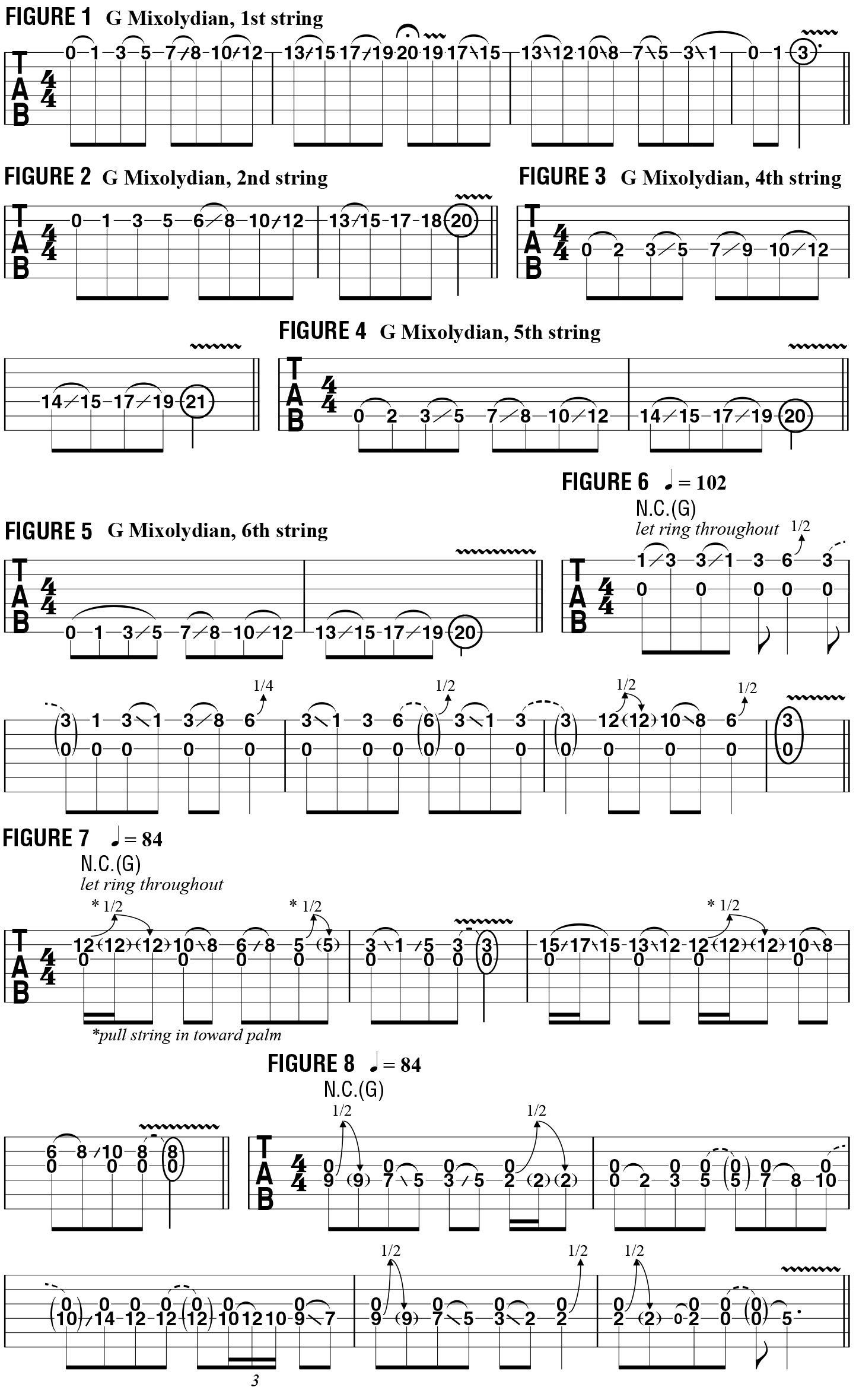Using Open-String Drones in Melodies
Spice up your playing by letting your G-string ring.
The open low E and A strings are often used as drones, facilitating the use of the higher strings for melody playing. Although the G string is situated in the “middle of the pack,” its use as an open-string drone is very distinct and has a great sound quality. One reason for this is that is serves to create the impression of open G tuning, a staple of acoustic and electric blues music.
Because the open-string drone concept is so appropriate for blues-type playing, and we’re utilizing the open G string as our tonic, let’s look at the blues-approved G Mixolydian mode (G A B C D E F) played on all the other strings besides the G.
FIGURE 1 illustrates G Mixolydian played up and down the high E string. Notice that it’s articulated with hammer-ons, finger slides, pull-offs and vibratos, in order to establish the typical manner by which blues guitarists will move through this scale when soloing.

FIGURE 2 illustrates G Mixolydian ascending the B string. Memorize this pattern and then practice it in descending form as well, incorporating pull-offs and slides in order to achieve a legato (smooth and connected) phrasing feel. FIGURES 3-5 show the G Mixolydian mode played on the D, A and low E strings, respectively. Memorize these patterns too and practice both ascending and descending.
A great way to create a bluesy open-G–like sound is to play melodic lines and patterns on a given string while simultaneously sounding the open G string as a drone, or pedal tone. In FIGURE 6, I employ hybrid picking—the combination of fingerpicking and flatpicking—to simultaneously sound ascending and descending phrases on the high E string while also sounding the open G. Use the plectrum to strike the G string and pluck the notes on the high E string with your middle or ring finger.
Now let’s apply this concept to melodic lines played on all of the other strings. In FIGURE 6, half-step bends are used to add flavor to the line. In FIGURE 7, with melodies played on the B string, perform the half-step bends by pulling the string in toward your palm, away from the open G string, so as to not bump into it. In FIGURE 8, a melodic line is played on the D string, and these half-step bends must be performed by bending the strings in an upward manner, by pushing the string away from the open G string.
Now that you’re familiar with this approach, try inventing some lines of your own on the A and low E strings while simultaneously sounding the open G-string drone.
All the latest guitar news, interviews, lessons, reviews, deals and more, direct to your inbox!
Guitar World Associate Editor Andy Aledort is recognized worldwide for his vast contributions to guitar instruction, via his many best-selling instructional DVDs, transcription books and online lessons. Andy is a regular contributor to Guitar World and Truefire, and has toured with Dickey Betts of the Allman Brothers, as well as participating in several Jimi Hendrix Tribute Tours.

